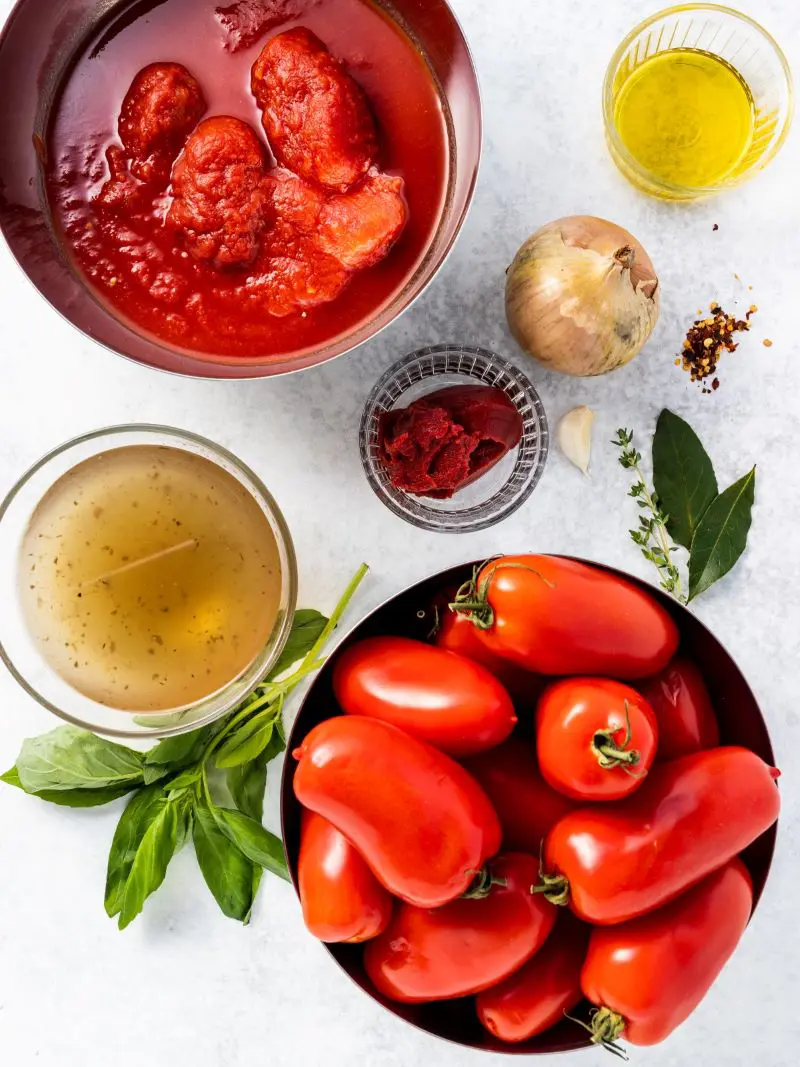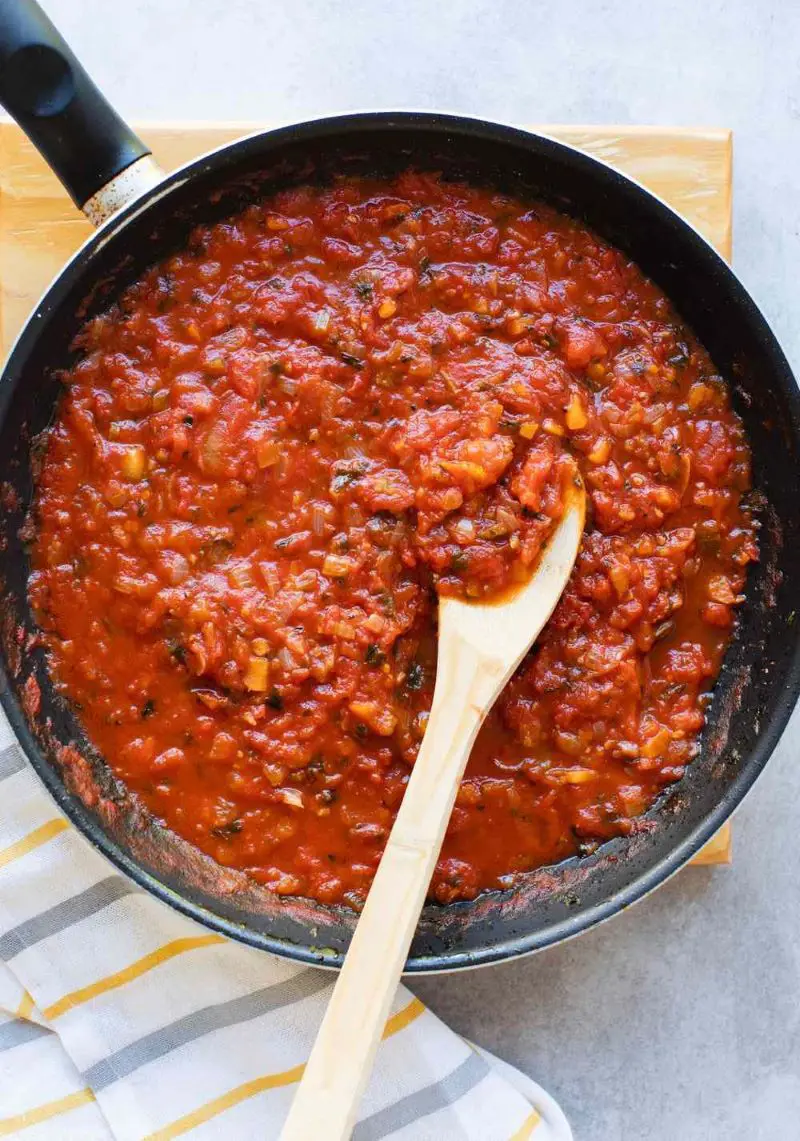What You'll Need To Make Tomato Sauce
- Fresh Tomatoes: You can use any appropriate-tasting tomato to make this tomato sauce—it’s that simple! You will need 10-12 medium-sized ripe tomatoes (about four-five pounds) for this recipe. If it’s not tomato season or you are pressed for time canned whole peeled tomatoes are a great alternative.
- Olive Oil: It provides richness and intensity to the sauce. Plus, it offers a diffused, fruity flavor and improves overall consistency. Use about 2 tablespoons.
- Onion: It provides a sweet and savory base. Sauteing the onion earlier than adding the tomatoes facilitates to caramelize its natural sugars. Use 1 medium finely chopped onion.
- Garlic: For a robust, aromatic flavor with a touch of savory intensity use garlic. Four cloves of minced garlic is sufficient for this recipe.
- Sugar: It balances the acidity of tomatoes. Use approximately 1 teaspoon. It’s especially useful if the tomatoes are particularly acidic or in case you decide on a slightly sweeter sauce.
- Dried Herbs: 1 teaspoon of each: oregano and basil to add fragrant and earthy notes. The herbs infuse the sauce with their wonderful, savory features, complementing the overall taste.
- Red Pepper Flakes: It gives a subtle warmness and a touch of spiciness. Use approximately 1/4 teaspoon and adjust accordingly with your heat desire.
- Salt and Pepper: They enhance the natural flavor of the sauce. Any type of salt, inclusive of sea or kosher, will work. Freshly ground black pepper is the high-quality preference.
- Fresh Basil (Optional): It may be used as a garnish to feature a burst of fragrant freshness to your tomato sauce. This is optional but recommended.

Tools
- Large Pot (for blanching)
- Large Bowl (for ice bath)
- Sharp Knife and Cutting Board
- Saucepan or Pot
- Wooden Spoon or Spatula
- Measuring Spoons
- Ladle or Spoon
- Blender or Immersion Blender (Optional)















